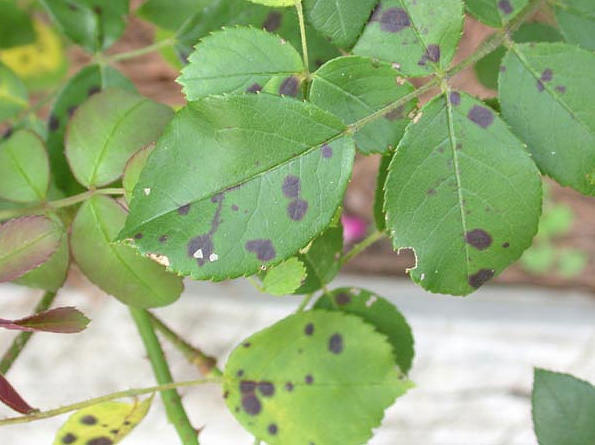






Of all the plant pathogens, the ones you will deal with mostly are fungi. All plants are susceptible to attack from fungus. Most fungi love wet conditions, and overwatering can produce such conditions.
If the soil your plant is rooted in does not drain well, and water stands too long at the base and around the roots, then your plant is at risk of developing water mold root rot, a condition that is caused by a variety of fungi. The fungi start a rot that invades the roots and then works its way up the plant. This can be a quick or a slow process, depending on conditions. Often, after the rot is established, you will see dark discolorations in the plant’s roots and stems. This is where the infected plant tissue meets the healthy tissue.
The following is a list of potential problems and common symptoms caused by fungal diseases.
Damping-off: This disease can kill seedlings before they even break through the soil, but it also strikes seedlings just an inch or so tall.
Root Rot: This generally attacks older plants, killing the tiny rootlets and appearing above ground as stunting and wilting.
Club Root: This disease commonly infects cabbage family plants, causing large swellings on roots and or dead plants.
Blights: Includes early and late blight, which attack tomatoes and their relatives. The fungi can damage or kill leaves and cause rot in the fruit.
Mildews: This would include downy and powdery mildew. Infection results in spots or white patches on leaves, shoots, and other plant parts. Downy mildew can kill plants rapidly; powdery mildew commonly causes poor growth and lower yield, but seldom kills the plant.
Rusts: This disease will produce orange and white spots, usually on leaves and stems, weakening plants and reducing crop yields.
Leaf Spot: These symptoms are caused by a wide range of fungi.
How to Minimize Fungal Problems
Fungi spread by spore production, giving the disease the ability to travel great distances. The spores can be picked up by animals or water, including gardeners! One of the best ways to prevent fungal problems is to select plants that are resistant to the fungal diseases in your area.
After treating plants with fungal problems, rinse your gardening tools with alcohol or bleach, in case any spores remain, and destroy any diseased leaves rather than leaving them on the ground or placing them in your composting bin.
Organic Fungus-Killing Sprays
Instead of treating areas with chemical powders, you can use organic fungicides made straight from products in your kichen. Here is a list of some safe and easy to make sprays:
Basic Soda Spray
2 Tablespoons baking soda
1 gallon water
Add 1 teaspoon of vegetable oil (adds stickiness)
Mix all together and spray on problem areas.
Soda Spray for Rust
2 tablespoons baking soda
1 gallon water
6 tablespoons of vegetable oil
2 tablespoons kelp extract
Mix together and spray rust-covered areas.
Garlic is known to fight many types of disease-causing fungi, including mildew, mold, and rust. Garlic has not only shown that it can fight fungi but it also has some repellant qualities for other diseases and insects.
Basic Garlic Spray
1 garlic bulb
1 quart water
Crush the garlic and place in a pan of water, bring to a boil, then turn off heat. Let the mixture cool. Strain out the garlic.
Pour liquid into a spray bottle and spray the infected areas of the plant.
Vinegar Spray
Apple cider vinegar makes a great spray to combat many fungal diseases, including black spot on roses.
3 tablespoons apple cider vinegar
1 gallon water.
Mix together. Spray plants, being sure to do so in the morning so that the plant can dry out before evening.
Nothing spoils the look of a plant or shrub more than a fungus disease. Hopefully, by using some of the methods described in this article, you will be able to keep your plants looking healthy!
Article by Ena Clewes, a retired horticulturalist. View her organic gardening book for more recipes and tips on organic fungicides.
Copyright © www.100flowers.win Botanic Garden All Rights Reserved